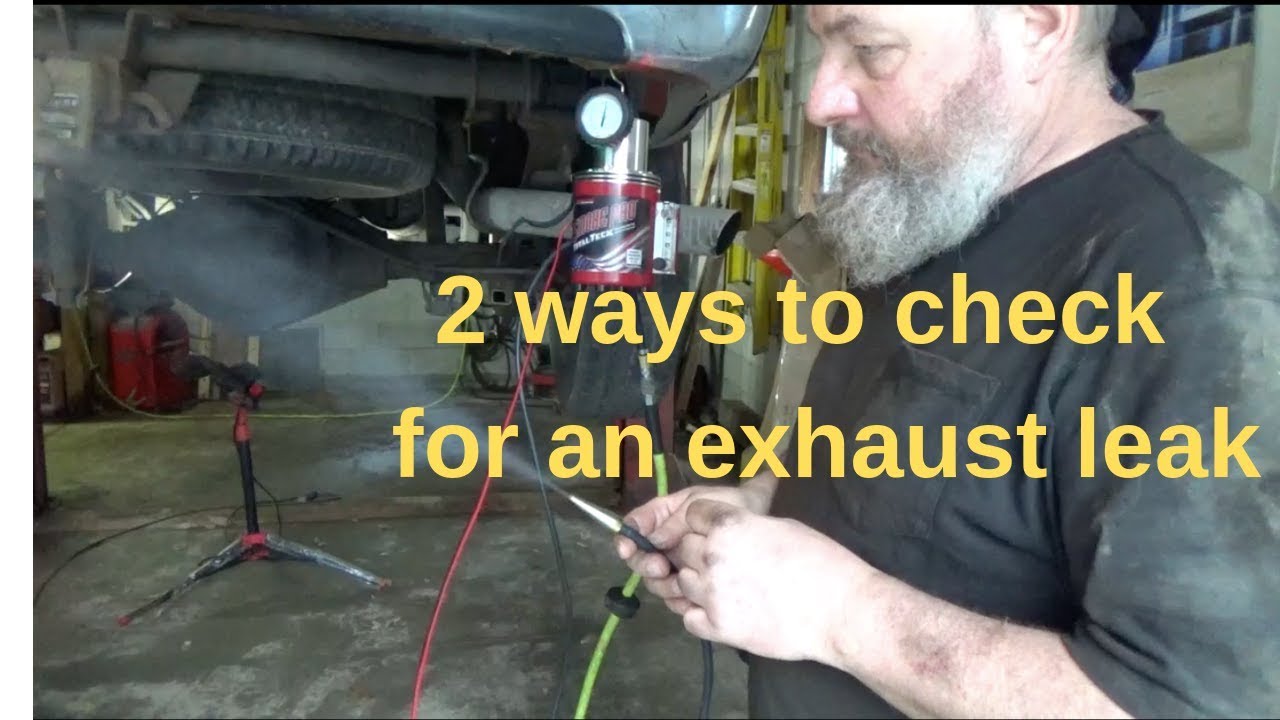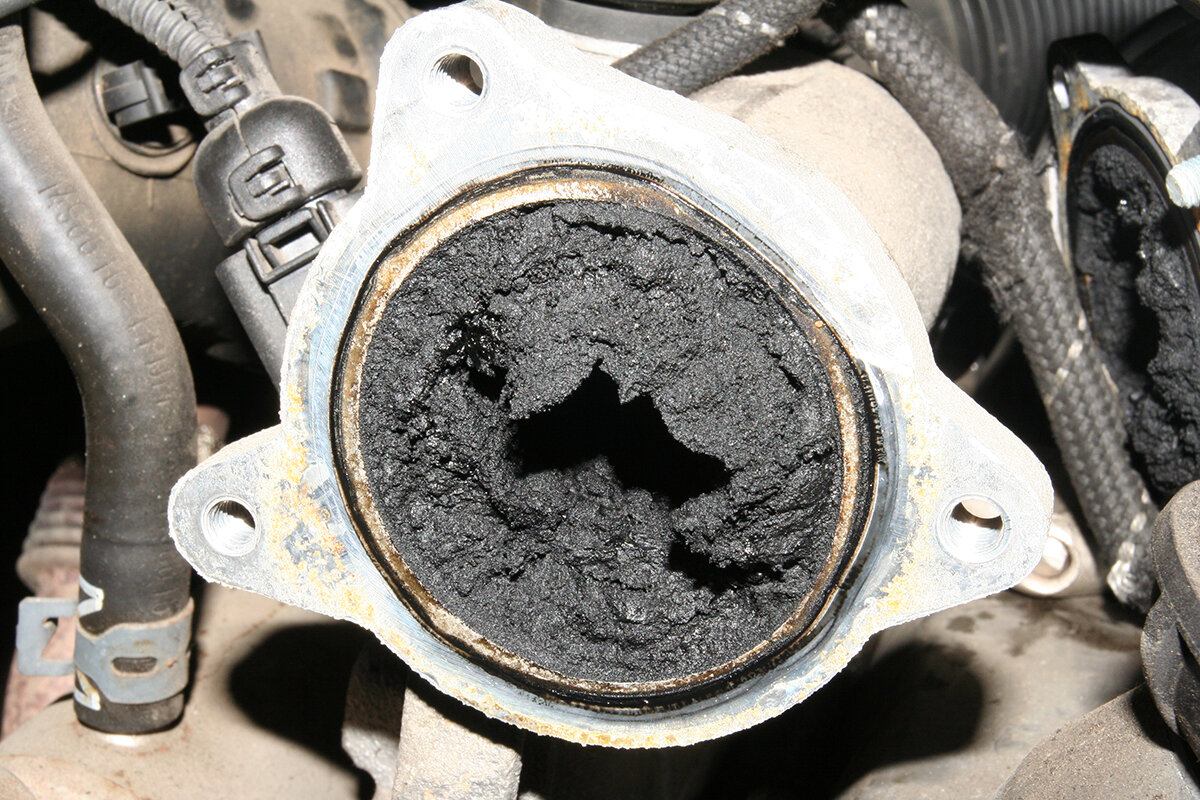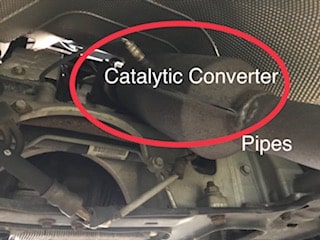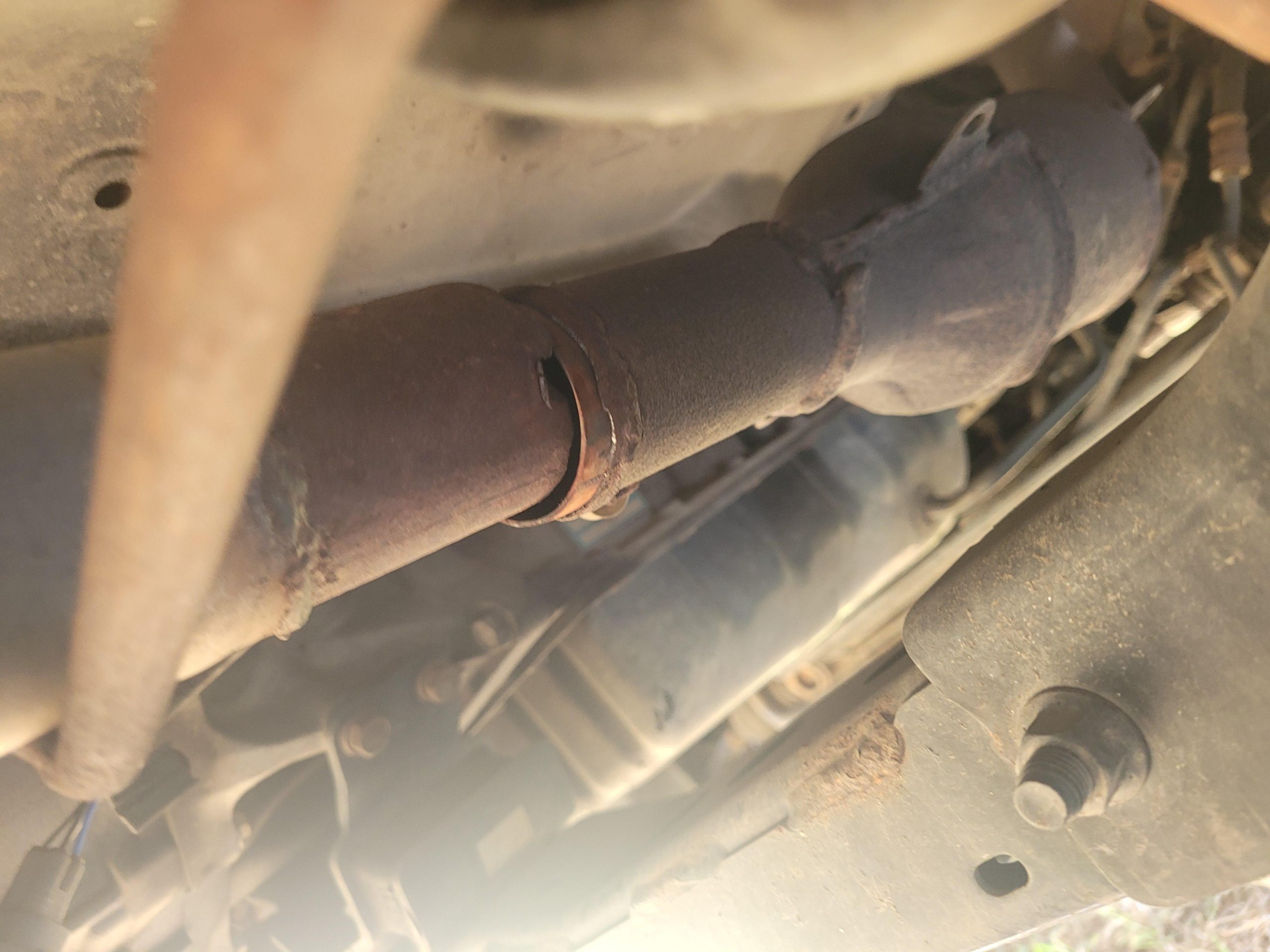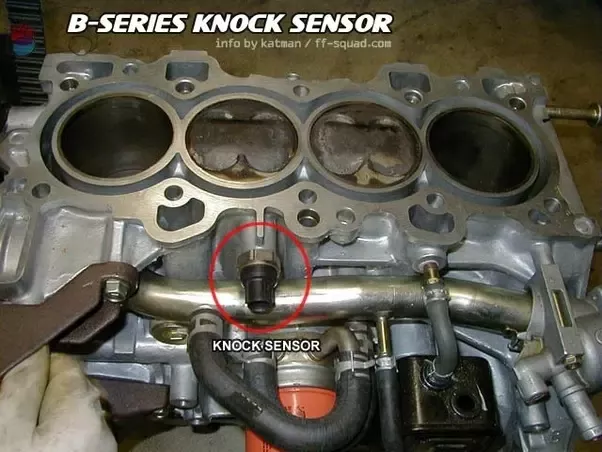How to Check for Exhaust Leak
To check for an exhaust leak, listen for unusual noises or hissing sounds and inspect for visible damage. A performance decline or a sulfuric smell can also indicate a leak.
Maintaining a vehicle’s exhaust system is crucial for optimal engine performance and environmental compliance. An exhaust leak can lead to reduced fuel efficiency, increased emissions, and potentially hazardous driving conditions. As such, identifying and repairing any exhaust issues promptly is essential for the safety and longevity of your car.
Regular checks for signs of wear, listening for irregular engine sounds, and monitoring for changes in vehicle performance are key steps in early detection of exhaust leaks. A professional inspection can provide certainty and ensure that all components of the exhaust system are functioning correctly.
Signs Of An Exhaust Leak
An exhaust leak can cause serious harm to your vehicle if left unchecked. Spotting an exhaust leak early prevents costly repairs. Recognizing the symptoms of an exhaust leak is crucial. Here is what to watch out for:
Unusual Noises From The Exhaust System
Listen for hissing or popping. These sounds indicate air escaping from small holes. A loud rumble may suggest a bigger breach. Sound changes are telltale signs.
Decreased Fuel Efficiency And Performance
An exhaust leak might trick sensors in the engine. This can lead to a reduced fuel economy and loss of power. Pay attention to any drop in mileage or engine responsiveness.
- Engine struggles to accelerate
- Fuel consumption increases noticeably
- Unusual odor from the exhaust

Credit: blog.fcpeuro.com
Safety First: Preparation And Precautions
An exhaust leak is not only a performance concern but also a health and safety issue. Before attempting to diagnose or fix an exhaust leak, prioritizing your safety is crucial.
Wearing Appropriate Protective Gear
Protective gear is a must when working on a vehicle. It safeguards against burns, fumes, and debris. Here’s what to wear:
- Gloves: Use mechanics gloves to avoid burns and scrapes.
- Eye Protection: Safety glasses keep your eyes safe from rust or metal shavings.
- Long Sleeves and Pants: Protect your skin from hot surfaces and chemicals.
Ensuring A Well-ventilated Working Area
Adequate ventilation is vital. Exhaust fumes can be harmful if inhaled. Take these steps:
- Work outdoors or in an open garage.
- If indoors, use exhaust fans or open windows to circulate air.
- Keep a carbon monoxide detector nearby to monitor fume levels.
Visual Inspection: Identifying External Damage
An effective method to detect an exhaust leak is through a thorough visual inspection. This process involves examining the exhaust system for any obvious signs of wear or damage. It is a critical first step before delving into more intricate diagnostic procedures. Let’s explore how to spot tell-tale signs of an exhaust leak.
Checking For Visible Cracks Or Holes
Begin with a cold vehicle to avoid burns. Put on safety glasses and use a flashlight for a clear view. Look for:
- Black soot – This can signal a leak.
- Rust or corrosion around joints and seams.
- Physical damage – Dents or warping from impact.
- Cracks or holes – Even small ones can cause leaks.
Pay special attention to the areas where exhaust components connect as these are common failure points.
Inspecting Exhaust Manifold And Gaskets
Examine the exhaust manifold which collects gases from the engine. Critical points to check include:
- Surface irregularities – These can indicate warping.
- Gasket condition – Look for deterioration or breaches.
- Bolt tightness – Ensure they are properly secured.
Leaks often occur here due to the high temperatures and pressure changes the manifold faces.
Using Pressure And Smoke Tests
Diagnosing an exhaust leak early can save you from costly repairs. Two effective methods to detect an exhaust leak are pressure tests and smoke tests. A pressure test can reveal the presence of a leak, while a smoke test allows you to identify the exact location of the issue. Here’s how to use these tests to ensure your exhaust system is in top shape.
Performing A Pressure Test
A pressure test helps spot an exhaust leak quickly. Follow these simple steps:
- Seal the tailpipe using an exhaust plug or a similar device.
- Attach a pressure gauge to a different part of the exhaust system.
- Increase the pressure inside the exhaust system.
- Monitor the gauge for any pressure drops that would indicate a leak.
Conducting A Smoke Test For Accurate Detection
Smoke tests offer a visual way to pinpoint leaks. To conduct a smoke test:
- Ensure the engine is off and cool.
- Connect a smoke machine to the exhaust system.
- Fill the system with smoke and look for it escaping.
Leaks will show as streams of smoke, making it easy to spot and repair them. Both these tests are straightforward and highly effective at keeping your vehicle’s exhaust in check.
Listening For Leaks: The Stethoscope Method
An exhaust leak can be a serious issue. It may cause your car to run less efficiently, and it can be dangerous due to the exposure to fumes. One accessible diagnostic tool for pinpointing where an exhaust leak might be is the stethoscope method. In a nutshell, this technique involves using a mechanic’s stethoscope to listen closely to various parts of the exhaust system to detect unusual sounds that indicate a leak. Let’s delve into how to conduct this process effectively.
How To Use A Mechanic’s Stethoscope
First, make sure the car is parked on a level surface and the engine is cool. You don’t want to risk burns. Here are steps to use a mechanic’s stethoscope:
- Start the engine – It should be at a normal operating temperature.
- Place the stethoscope probe – Touch it to different parts of the exhaust system like the manifold, pipes, and muffler.
- Listen carefully – Note any hissing or popping sounds; these could indicate leaks.
- Move methodically – Systematically check each joint and bend in the exhaust system.
Distinguishing Between Normal And Leaking Sounds
Understanding what’s normal is crucial when searching for leaks. Regular engine noises can be a hum or a steady roar, while the sound of a leak is often more like a sharp hiss, tap, or sometimes a rhythmic puffing sound. Knowing the difference helps in accurately identifying an issue:
- Normal engine sounds – Smooth and consistent.
- Leak sounds – Hissing, tapping, or puffing indicating escaping gases.
With practice, you’ll become adept at recognizing the nuances in sound that distinguish a leak. This type of auditory examination, alongside other methods, can be invaluable in maintaining the health of your car’s exhaust system.
Common Culprits: Muffler And Tailpipe
An exhaust leak can compromise your vehicle’s performance and put you at risk for carbon monoxide exposure. Among the usual suspects for leaks, the muffler and tailpipe stand out. These components endure constant heat, pressure, and corrosive gases, making them prone to wear and tear. Spotting issues early can save you from costly repairs.
Examining The Muffler For Corrosion Or Damage
Your muffler’s health is crucial for a quiet and safe ride. To check it:
- Look for rust. Any orange or rusty spots are bad signs.
- Spot holes or cracks. They can let toxic gases escape.
- Check welds. Look closely where parts join together.
- Listen for strange sounds. Rumbling or rattling means trouble.
Take your car to a professional if you see or hear any of these problems. It’s not safe to drive with a damaged muffler.
Assessing The Condition Of The Tailpipe
The tailpipe is the final exit for exhaust gases. Inspecting it is important:
- Check the outside. It should be free of dents and heavy soot.
- Peek inside. Excessive black residue indicates issues.
- Look for moisture. Water dripping is a red flag.
- Feel for air. A running engine should have a consistent flow.
If your tailpipe shows these symptoms, get it checked. A blocked or leaking tailpipe can hurt your engine.
Fixing An Exhaust Leak
An exhaust leak is not just a noisy nuisance; it can be dangerous. Fumes may enter the vehicle, posing a risk to passengers. It’s crucial to address leaks promptly. Here’s how to handle them effectively.
Temporary Fixes vs. Permanent SolutionsTemporary Fixes Vs. Permanent Solutions
Quick fixes can seem appealing, especially when they save time and money. Epoxy and tape offer temporary relief, but these solutions don’t last.
- Exhaust system putty eases symptoms for a short while.
- Tape acts as a temporary bandage around small holes.
Permanent repairs require replacements or welding. These ensure a safer, longer-lasting solution. A full inspection helps pinpoint what’s needed.
When To Seek Professional Repairs
DIY may be tempting, but some scenarios call for professionals. Complex exhaust systems need expert skills and tools.
| Seek Professional Help When: |
|---|
| Leaks are large or there’s multiple. |
| Damaged areas need precise welding. |
| You lack the right tools or confidence. |
| The vehicle’s performance is compromised. |
If safety or legal concerns arise, seek immediate expert attention. A professional will ensure everything is up to standard.
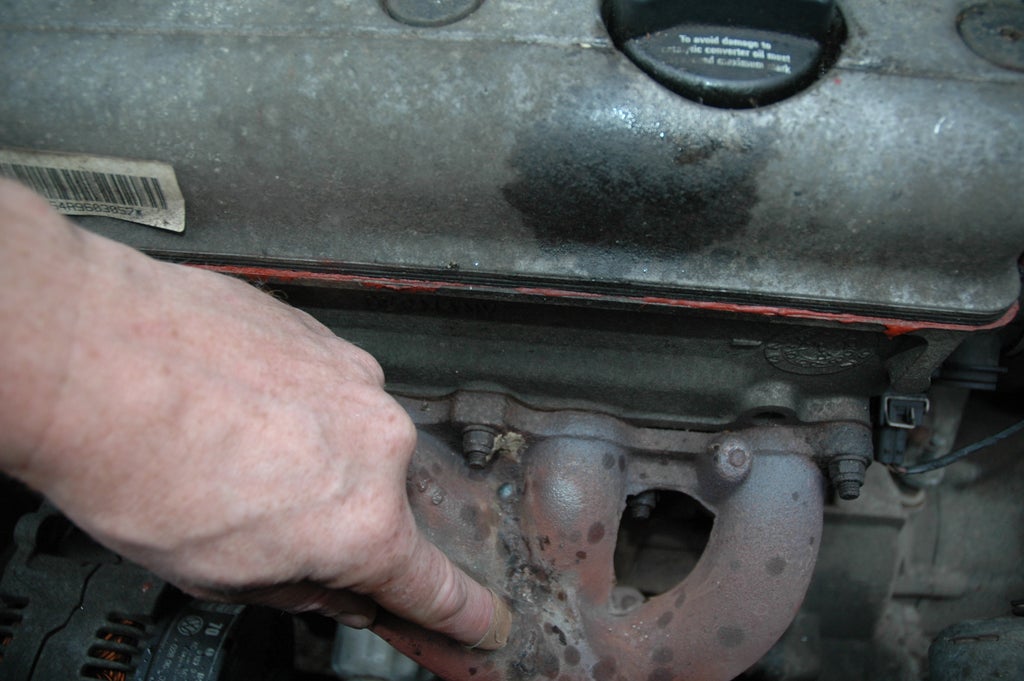
Credit: www.instructables.com
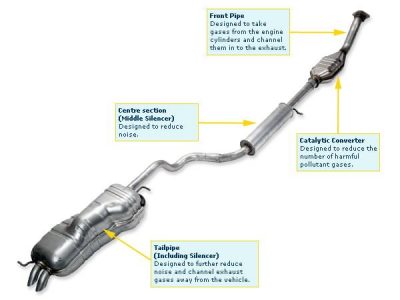
Credit: gobdp.com
Frequently Asked Questions Of How To Check For Exhaust Leak
What Are Signs Of An Exhaust Leak?
An exhaust leak often presents with increased engine noise, a ticking sound during acceleration, or a smell of burning gases. You might also experience a drop in power, fuel efficiency, or hear hissing sounds. Regular inspections can help detect these early signs.
Can A Diy Method Detect An Exhaust Leak?
Yes, you can perform a simple check by listening for hissing or popping noises. Also, with the engine running, place a shop towel over the tailpipe momentarily; if pressure doesn’t build, there may be a leak. Take caution to avoid burns and follow safety procedures.
How Does An Exhaust Leak Impact Car Performance?
An exhaust leak can lead to decreased performance and fuel efficiency. It can cause the engine to run lean, potentially leading to misfires and rough idle. The car may also suffer from reduced horsepower and exhibit acceleration problems.
Does A Professional Need To Fix Exhaust Leaks?
While some minor leaks can be repaired with exhaust tape or sealant, a professional should address significant breaches. Mechanics have the tools and expertise to diagnose accurately and repair exhaust leaks, ensuring your vehicle is safe and running optimally.
Conclusion
Identifying an exhaust leak early is vital for your vehicle’s health and performance. Armed with the knowledge from this guide, you can tackle potential issues proactively. Remember, regular checks are key to a smooth and safe ride. Keep your car in top condition and ensure peace of mind on the road.

